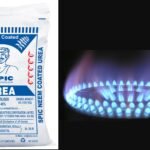Large banks experience increased stress in the agribusiness, MSME, and retail sectors in Q4.
For the quarter that ended in March 2022, most large banks said that the number of new bad loans went up from the previous quarter. In the fourth quarter of FY22, 17 banks reported slippages totaling ₹53,512 crore, which is 28% more than in the third quarter of FY22. Even though the drop in the lumpy Future Retail exposure during Q4 is partly to blame for the trend, higher stress in the Agri, MSME and retail segments also made a big dent in the banks’ bad loan pie.
UCO Bank and Punjab National Bank (PNB) saw the biggest jumps in slippages, with 150% and 138% increases, respectively. During the March quarter, the top jobs at both banks were taken over by new chief executives.
Also Read | Need extra steps to develop Agri sector by encouraging MSMEs – Om Birla.
With ₹10,506 crore, PNB had the largest slippage pool among large banks. The stress was spread across retail, agriculture, and micro, small, and medium enterprises (MSME). Out of the ₹2,871 crore in MSME defaults, ₹838 crore came from people who borrowed money through the emergency credit line guarantee scheme.
PNB thinks that smaller accounts will continue to have slippages in the coming quarters. AK Goel, the bank’s MD and CEO, told investors on a post-results call that the bank’s SMA 2 portfolio in accounts of ₹5 crore or more is worth ₹120 crore, which is less than the ₹3,000 crore it was worth in December 2021. ‘But definitely, the slippage could be from a small account,’ Goel said. ‘So we will improve our monitoring and collection systems.’
Stress in the MSME market was especially bad for banks in FY22 when the second wave of Covid’s damage left them in shambles. Analysts were told by VS Khichi, who is the executive director of Bank of Baroda (BoB), that all small businesses have been having trouble. Khichi said, ‘I’ll just say that most of the MSME sector was reeling under pressure at the time, and we saw slippages of around ₹3,000 crore in this full financial year, but the situation seems to be getting better and better now.’
Even though the number of slip-ups is going up, analysts are encouraged by the fact that banks’ recoveries have been getting better. In a recent report on BoB, Emkay Global Financial Services said that even though new slippages were higher at ₹5,800 crore, which was 3.2% of loans, higher recoveries and write-offs led to a 64-bps drop in the gross non-performing asset (NPA) ratio to 6.6%. The bank’s SMA-1 and 2 pool also fell from 1.1% in Q3 to 0.4%, which is the lowest it has ever been.
Also Read | Help young entrepreneurs in the Agri sector to get finance: Vice President to Banks.
At the same time, it’s possible that the stress that’s building up in restructured retail and MSME accounts isn’t being shown by banks’ improving asset quality ratios. In a recent report, analysts at Fitch said, ‘We believe that the substantial growth in retail loans and exposure to micro and medium-sized enterprises (MSMEs) and vulnerable corporate sectors have created risks that are not reflected in the improving impaired loan ratios due to regulatory forbearance.’
Due to the high share of secured loans in retail loans, risks are lower. However, banks with a lot of unsecured loans, loans to self-employed people, and loans to people with low incomes may face problems, says the agency, which sees MSMEs as the most vulnerable segment.















Add Comment